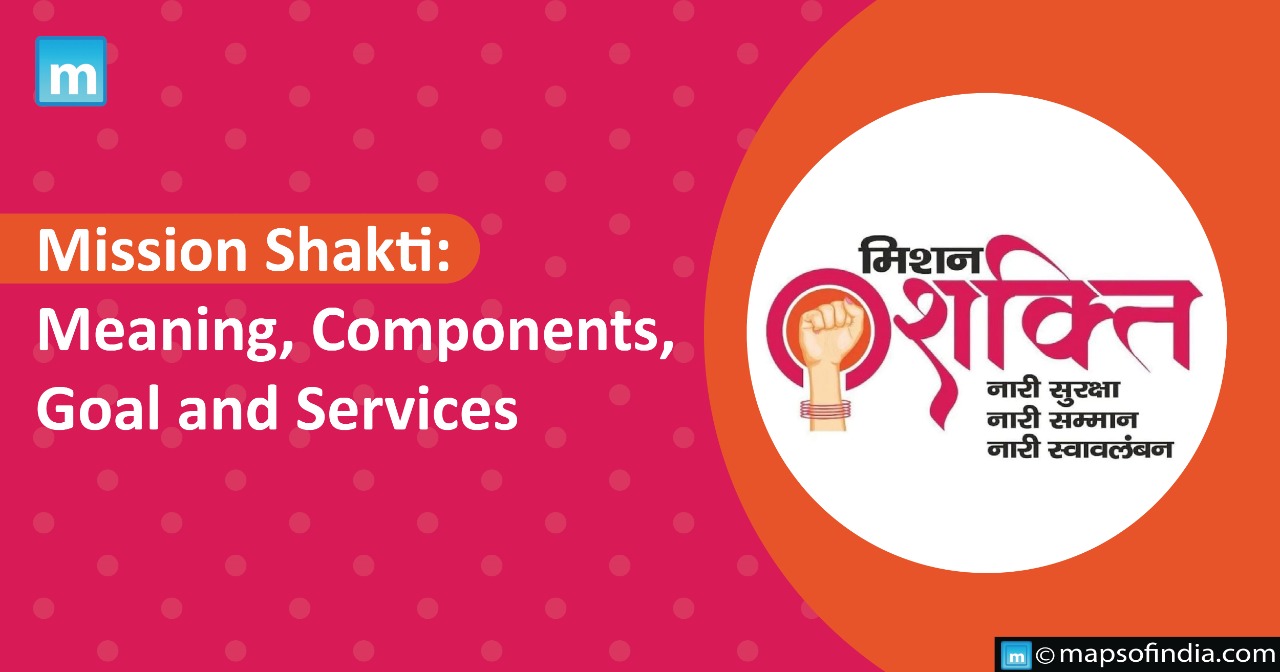Mission Shakti is a mission-oriented strategy focused on improving interventions for women’s protection, security, and empowerment. It aims to fulfil the government’s goal of women-led development by tackling issues impacting women throughout their lives and making them equal participants in nation-building via convergence and citizen-ownership.
It was initiated during the 15th Finance Commission, which ran from 2021-22 to 2025-26. Mission Shakti is a comprehensive women empowerment initiative developed as an umbrella plan for the execution of women’s protection, security, and empowerment.
Various components of Mission Shakti:
Sambal
- It is an initiative for women’s protection and safety.
- Several women’s organisations have been set up under this initiative, including Women Helpline (WHL), One Stop Centre (OSC), Nari Adalats, and Beti Bachao Beti Padhao (BBBP) – women’s collectives that promote and facilitate alternative conflict resolution and gender equality in the family and society at large.
Samarthya
- It is an initiative for women’s prosperity and empowerment.
- With some modifications, it incorporates the former initiatives of Ujjwala, Swadhar Greh, and Working Women Hostels.
- In addition, Samarthya has incorporated the existing programs of the National Creche Scheme for the children of working mothers and the Pradhan Mantri Matru Vandana Yojana (PMMVY) under the banner of Integrated Child Development Services (ICDS).
- The Samarthya Scheme now includes a new Gap Financing for Economic Empowerment element.
Services and Activities associated with the Mission Shakti:
Emergency/immediate assistance and short-term support
- National toll-free helpline and integrated facilities such as makeshift housing, legal aid, psycho-social therapy, medical help, police facilitation, and linking them with existing services, among other things, via One Stop Centres.
Institutional Management for Long-Term Assistance
- Providing support and care for women from conception through the time they require it.
- To ensure the safety of working women, the Working Women Hostel, or SakhiNiwas, would be established.
Behaviour Modification Communication for women’s rights and criminality and violence towards women:
- This would entail large-scale gender sensitisation campaigns and community engagement.
- Furthermore, men and boys would be engaged to collaborate in combating violence towards women and gender stereotypes.
What are the goals of Mission Shakti?
- Provides women affected by abuse and those in distress with an urgent and complete continuum of care, support, assistance, and mental and financial help.
- The mission is to provide high-quality methods for rescuing, protecting, and rehabilitating women in need of aid and survivors of crime and abuse.
- To increase women’s access to numerous government services at differing stages.
- In addition, making people aware of government plans and programmes, as well as legal measures, to combat social problems such as Sexual harassment at work, domestic violence, dowry, and gender equality, among other things.
- Establishing an enabling framework for public-private partnerships for women’s safety and empowerment across the entire spectrum of government sectors in coordination with partner Ministries/Departments/States/UTs.
- To avoid gender-biased sex-selective abortion or elimination, ensure the female child’s survival, protection, educational care, health care, nutritional values, and growth.
- It also aims to minimise the care load on women and enhance female labour force participation through professional growth, technical assistance, financial literacy, and access to microcredit, among other things.
